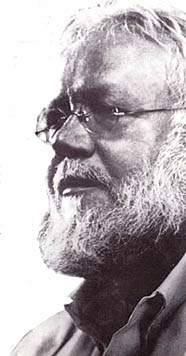Biography of Reginald Aubrey Fessenden
Back: IEEE Canada > Awards > Major Awards for Members
IEEE Canada remembers, through the Reginald Aubrey Fessenden Silver Medal, his contributions to the development of wireless communications. See the list of recipients of the R.A. Fessenden Award.
Biography
 Reginald Aubrey Fessenden (1866-1932) has often been called the unsung hero of the telecommunications industry. Born in East Bolton, Quebec, in 1866, he received his education in Canada, but left at an early age to work with Thomas Alva Edison and later George Westinghouse in the United States. He was soon recognized as a brilliant researcher and inventor, became a professor of electrical engineering at Purdue University from 1892-1893 and at Western University of Pennsylvania (now University of Pittsburgh) from 1893-1900. Like many others of his day, he was fascinated with the theories expounded by Heinrich Hertz and pondered the potential of their application to wireless communication. He developed an entirely new system of wireless transmission distinct from and based on a different principle from that of Lodge, Marconi, and all others working in this area… a principle which later proved to be the correct one. In his laboratory at Cobb Island in the Potomac River on December 23, 1900, he hooked up a microphone and communicated intelligible speech by electromagnetic waves a distance of fifty miles. This was the world’s first, and one year before Marconi’s highly acclaimed trans-Atlantic signal.
Reginald Aubrey Fessenden (1866-1932) has often been called the unsung hero of the telecommunications industry. Born in East Bolton, Quebec, in 1866, he received his education in Canada, but left at an early age to work with Thomas Alva Edison and later George Westinghouse in the United States. He was soon recognized as a brilliant researcher and inventor, became a professor of electrical engineering at Purdue University from 1892-1893 and at Western University of Pennsylvania (now University of Pittsburgh) from 1893-1900. Like many others of his day, he was fascinated with the theories expounded by Heinrich Hertz and pondered the potential of their application to wireless communication. He developed an entirely new system of wireless transmission distinct from and based on a different principle from that of Lodge, Marconi, and all others working in this area… a principle which later proved to be the correct one. In his laboratory at Cobb Island in the Potomac River on December 23, 1900, he hooked up a microphone and communicated intelligible speech by electromagnetic waves a distance of fifty miles. This was the world’s first, and one year before Marconi’s highly acclaimed trans-Atlantic signal.
In spite of efforts to establish himself back in Canada, he was unsuccessful and elected to pursue his research in the United States. Fessenden had over 500 patents issued in various fields, especially in the transmission of light sound and electrical waves. The Fessenden radio patents, which were lost in a struggle with the National Electric Signaling Company, were later acquired by R.C.A. for $3,000,000. Dr. Fessenden received the Medal of Honour from the IRE (Institute of Radio Engineers) in 1921 (the IRE merged with the American Institute of Electrical Engineers (AIEE) in 1963 to become the IEEE). He also received the John Scott Medal from the Advisory Committee of the City of Philadelphia in 1922 for his inventions in continuous wave “telegraphy and telephony” and the Scientific American Medal in 1929 for his numerous inventions relating to safety at sea.
Fessenden died in Hamilton, Bermuda on July 22, 1932, relatively unknown. His son Ken wrote the dedication in the book entitled “Radio’s First Voice, the Reginald Fessenden Story.”
“By his genius, distant lands converse and men sail unafraid upon the deep.”
The stone on Reginald’s memorial in Bermuda reads: “His mind illuminated the past. And the future. And wrought greatly for the present.” Below this reads: “I am yesterday, and I know tomorrow.”
Note: Upon her death in 1941, Helen Fessenden’s will established scholarships in Canada to be known as the Fessenden-Trott Scholarships. There are four scholarships ($9,000 Cdn. annually) available to any first year university student (provided the university is a member or affiliate of the Association of Universities and Colleges in Canada) in any discipline. Each year these scholarships are offered in a different Region of Canada (2000: Atlantic Provinces, 2001: Ontario, 2002: Western Provinces, 2003: Québec).







